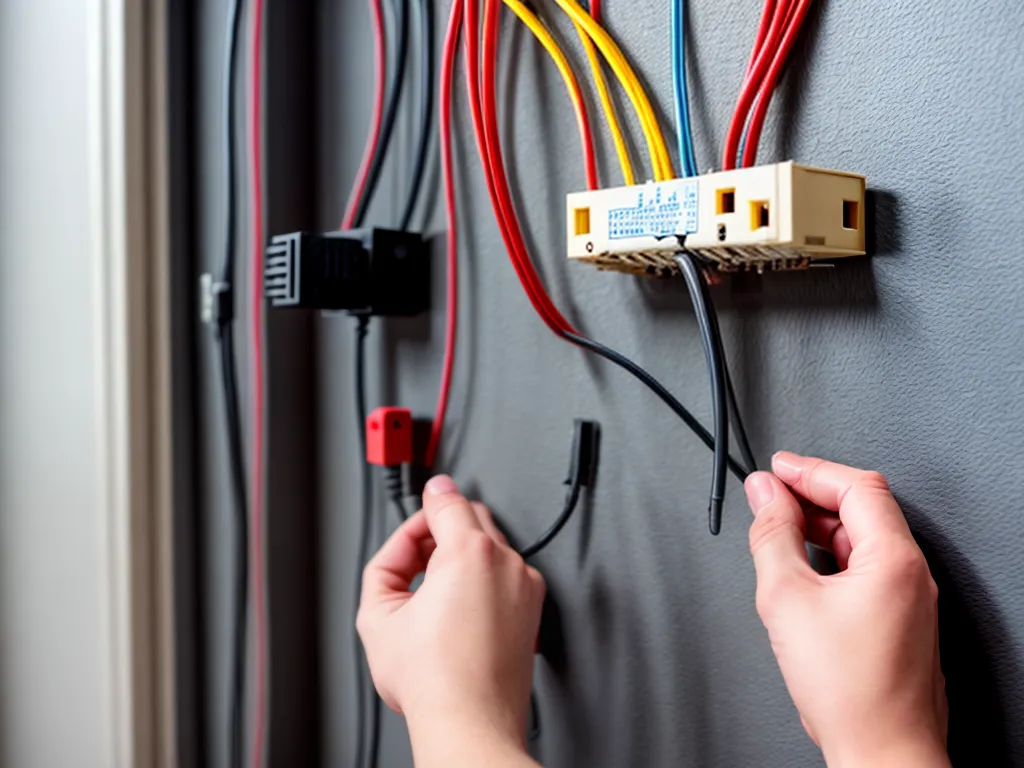
Introduction
Wiring a home can seem like an intimidating task, especially if you don't have any prior electrical experience. However, with the right precautions and preparations, even beginners can safely wire lighting, switches, and outlets in their home. In this comprehensive guide, I'll walk through all the key steps to follow for safely wiring a home without experience.
Gather the Right Supplies
Before getting started, you'll need to stock up on some basic electrical supplies:
- Wire strippers - Allows you to strip the plastic insulation off wires
- Voltage tester - Used to check if wires are live before working on them
- Electrical tape - Used to insulate wire connections
- Wire nuts - Twists wires together for a solid connection
- Electrical boxes - Houses wiring connections and mounts to the wall
- Cable staples - Secures wiring against wall studs and joists
- Wire - Used for making the electrical connections
Be sure to get the proper wire gauge for the circuits you'll be working on. For 15 amp general lighting circuits, 14/2 cable with ground is commonly used. For 20 amp kitchen, laundry, and bathroom circuits, use 12/2 cable with ground.
Turn Off Power and Check Wires
Before doing any wiring work, you must first turn off the power at the main circuit breaker panel. Test wires with a voltage tester to make sure power is off. Remember to check that the power is not just locally turned off, but shut off at the main panel.
Plan Your Wiring Layout
Carefully consider where you want switches, lights, and outlets placed. Having a wiring plan minimizes mistakes and saves time. Draw a simple diagram of the wiring layout to use as a reference. Group together circuits that will share the same path through walls, attics, and basements.
Run Cables and Conduit
With the power off, you can start routing new cables between the fixtures and outlet boxes and back to the main panel. Follow these tips:
- Secure cables with cable staples every 4-5 feet through studs
- Use electrical conduit to run cables through concrete or masonry
- Drill holes in wall studs and joists for running cables between floors
- Don't place cables loose on attic insulation - run through conduit above
Leave plenty of extra wire at each box for making connections.
Connect Switches and Outlets
At each switch and outlet box, carefully strip off about 1/2 inch of the outer plastic sheathing from the cable using wire strippers. Be careful not to nick the inner wires.
Wire connections can be made as follows:
- Hot (black) wire to the brass screw
- Neutral (white) wire to the silver screw
- Ground (bare) wire to the green screw
Securely twist wires together with wire nuts and wrap each connection with electrical tape. Follow diagrams on the switch/outlet closely.
Connect Lights and Appliances
At each light fixture, fan, or appliance, make connections from the wiring cables to the unit. Most lights and fans have push-in or screw terminals, along with a ground wire. Appliances have a terminal block or leads to connect hot and neutral wires.
Again, be sure to securely fasten each wired connection and wrap with electrical tape. Don't forget the ground wire.
Inspect and Test
With all wiring connections made, carefully inspect each one before restoring power. Look for:
- Loose wire connections
- Exposed wire ends not capped off
- Loose cables not tightly secured
- Faulty connections to switches and outlets
Once inspected, turn on the power and test operation of lights, fans, and outlets. Check for proper function, and make any wiring corrections needed.
Safety Tips
When working on home electrical wiring, be sure to follow these important safety practices:
- Turn off power at the main breaker panel before starting
- Double-check wires are not live with a voltage tester
- Work carefully, avoid nicking or damaging wires
- Make tight and secure connections
- Insulate all connections properly
- Keep nearby flammable materials away
- Avoid working on wiring alone
When to Call an Electrician
While many basic wiring projects can be DIY, when in doubt, call a licensed electrician. Seek professional help for:
- Major appliance circuits like stoves, dryers, A/C units
- Hot tubs, pools, and outdoor wiring
- Whole house rewiring jobs
- Service panel and feeder wire upgrades
- Troubleshooting complex wiring problems
Paying an electrician is worthwhile to ensure safety for large and complicated electrical work.
Conclusion
With good planning and by following basic electrical safety procedures, even novice DIYers can successfully wire lighting, switches, and outlets in their homes. Just take it slowly, double-check your connections, and seek help from experts when needed. Thoroughly researching the project ahead of time will also set you up for success. With the right diligence, you can wire your home's electrical system safely without experience.